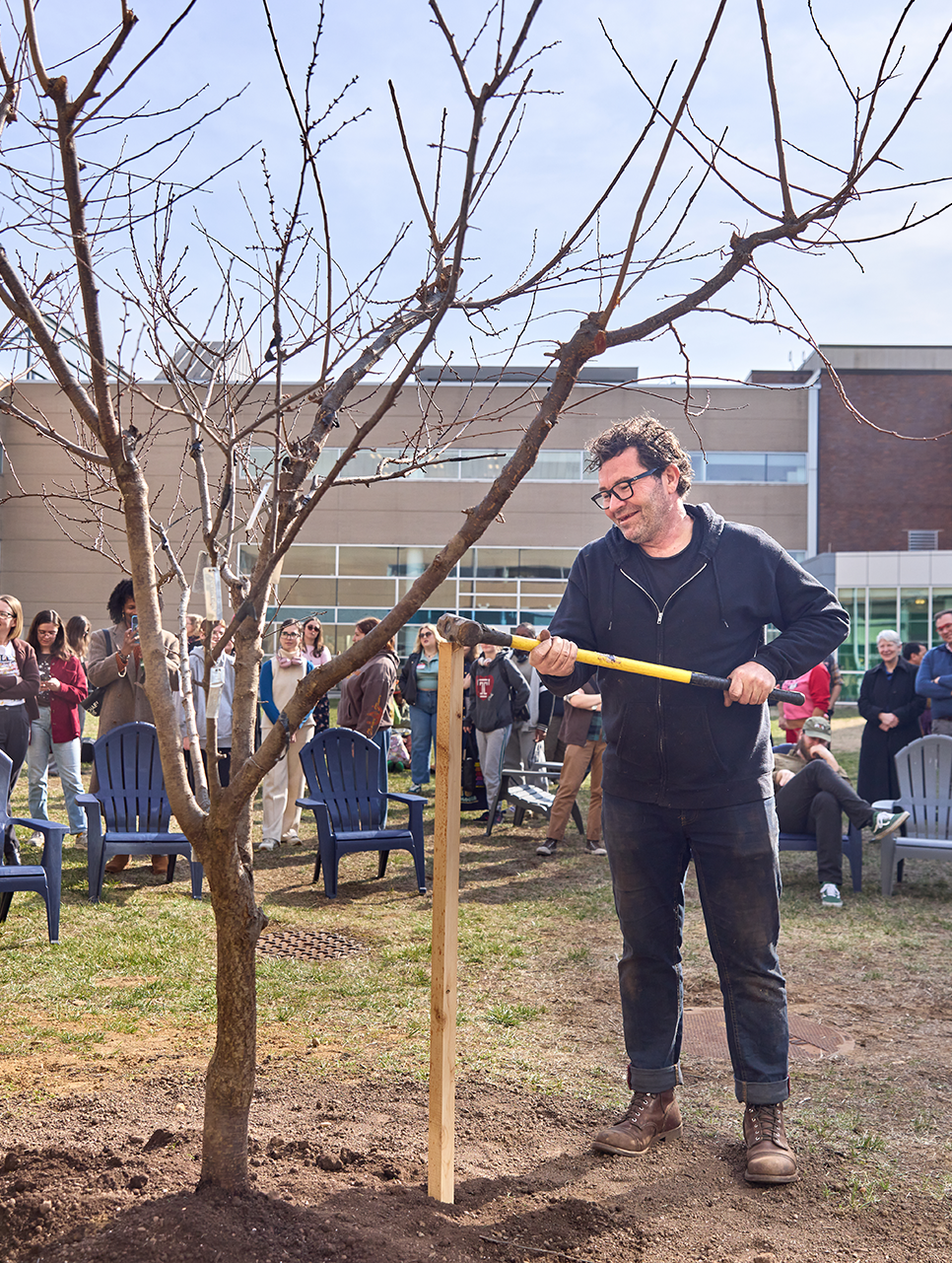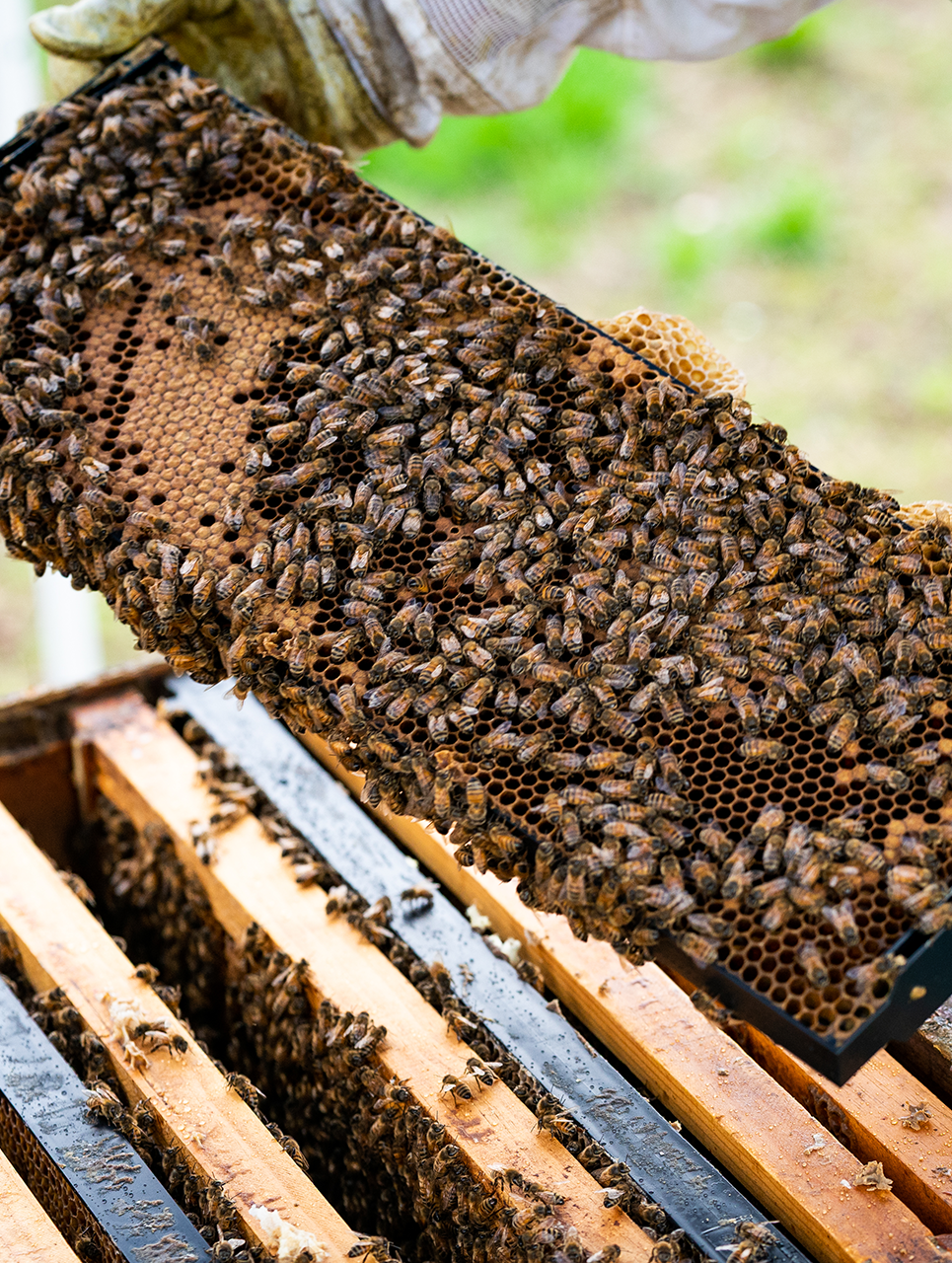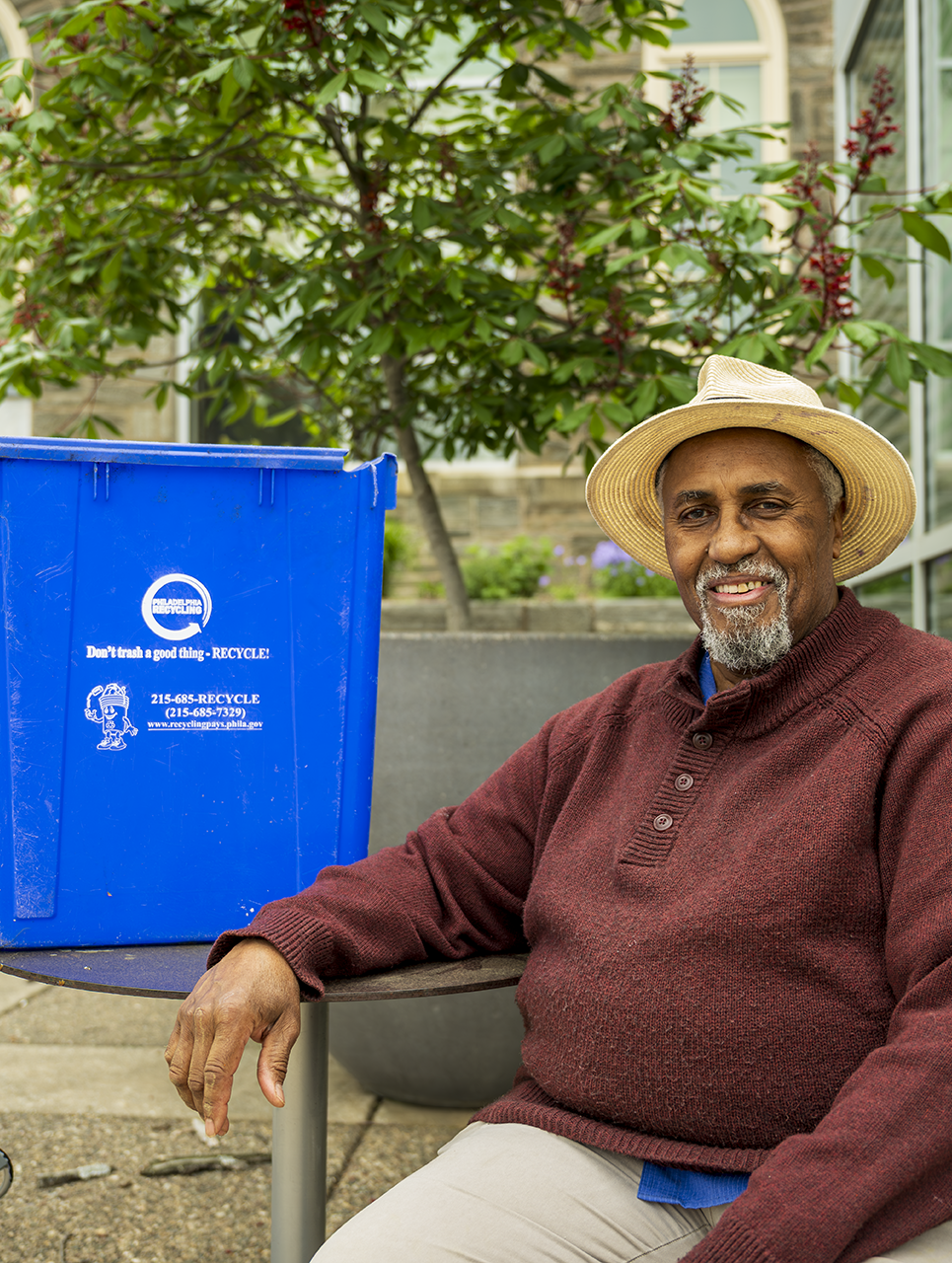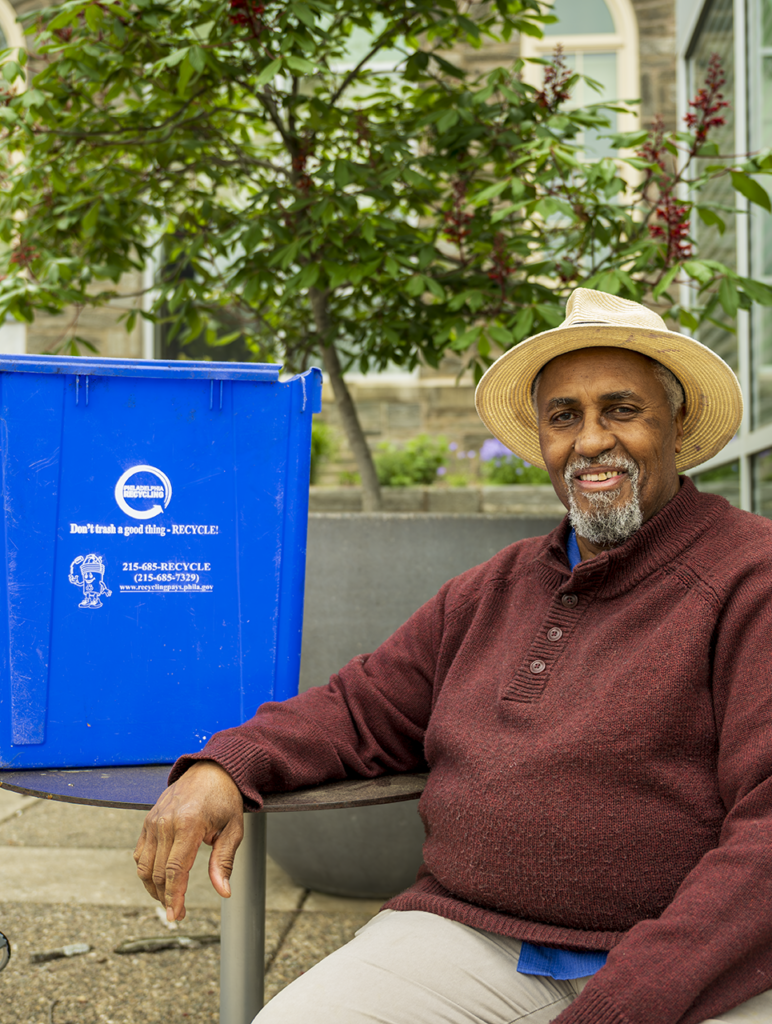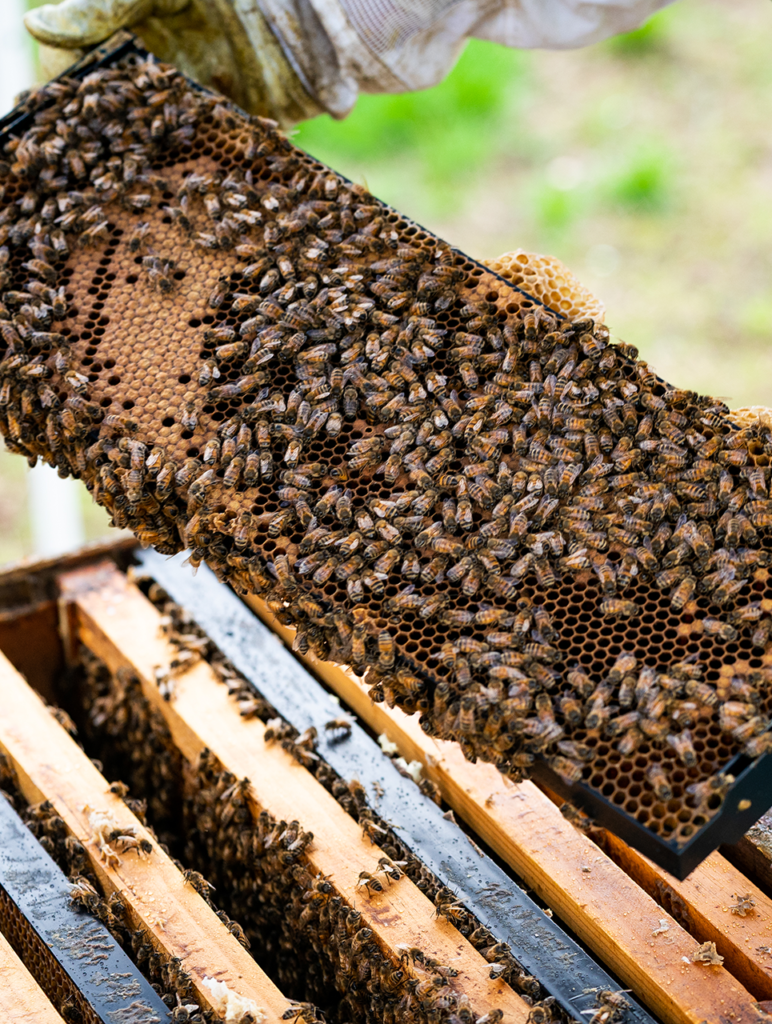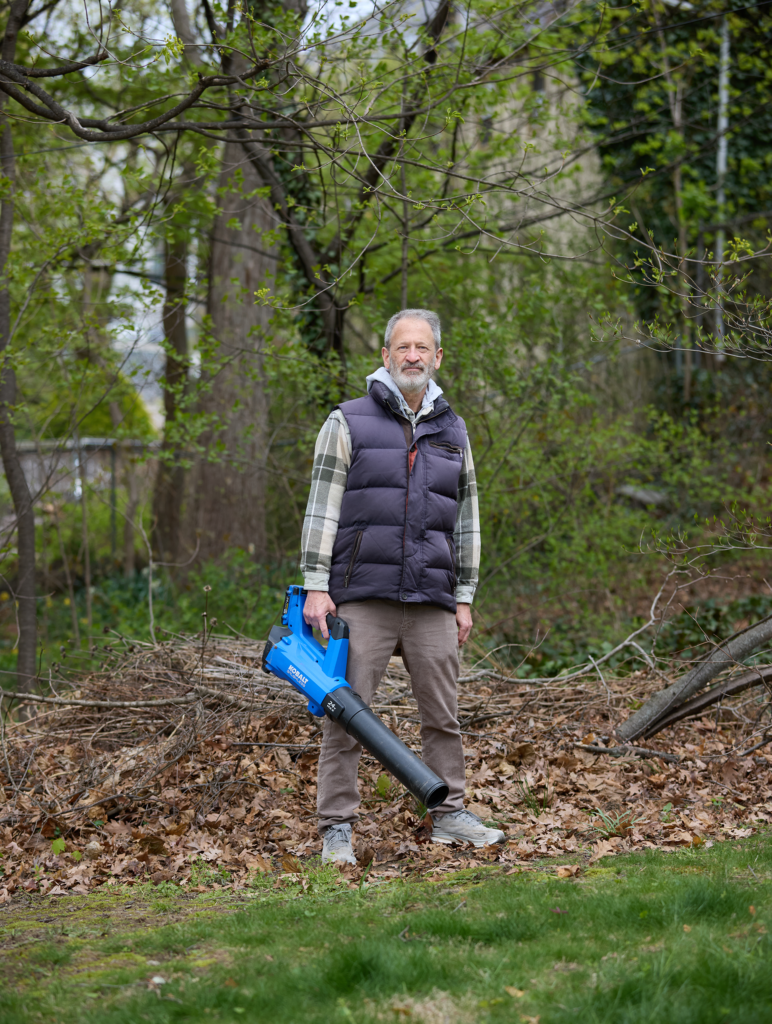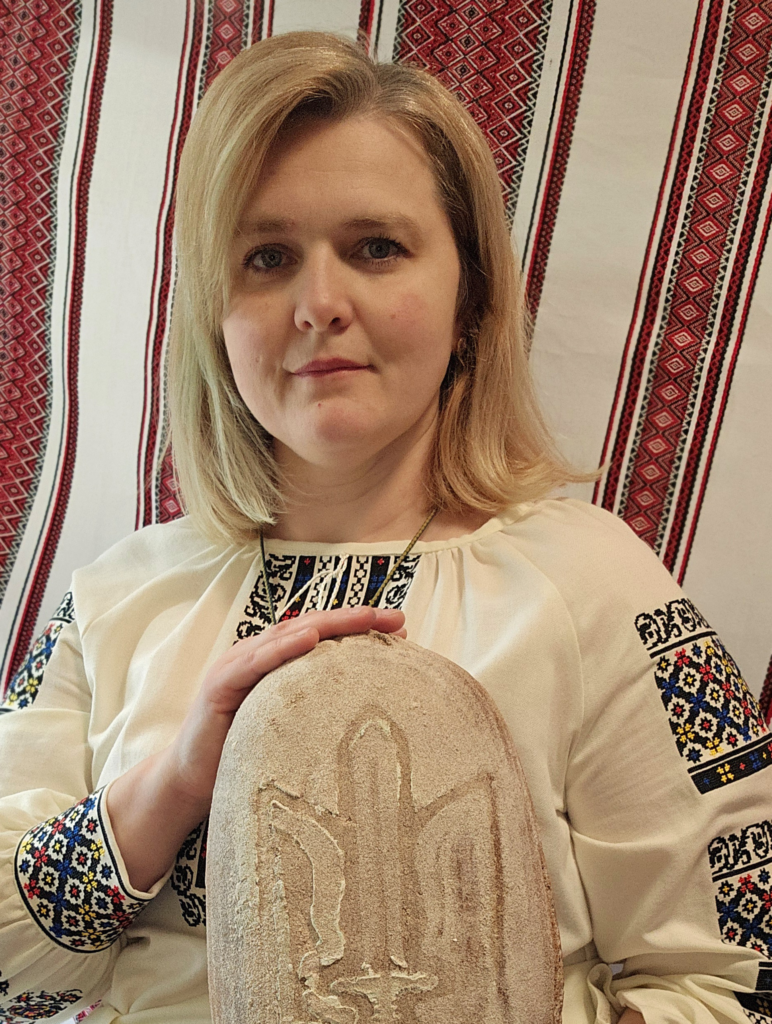On March 14, a seven-year-old tree, which had arrived grafted with 15 varieties of stone fruits, was planted alongside a natural dye garden before a crowd of about 50 community members at Temple University’s Tyler School of Art and Architecture. Sam Van Aken grafted 15 additional varieties onto the tree the next day and will return each year for five years to continue grafting until the tree bears 40 different fruits — including pears, plums, peaches, nectarines, cherries and almonds — that are native to or have historically been planted in the region.
“I started to look at the fruit themselves as cultural objects,” Van Aken says. “They’re almost like artworks; they have a particular provenance, a specific history of where they’ve traveled … and embedded within that object are people’s narratives.”
A college trip to Europe led to driving ambulances in the Bosnian War, which then led to working with dissident artists in Poland. When he returned to the United States, Van Aken knew the power of art. What Van Aken, who grew up on a farm, did not know was that making art of consequence would lead him back to his agricultural roots.
A professor of art at Syracuse University, Van Aken is also an internationally-recognized contemporary artist, creator of the Tree of 40 Fruit and the Open Orchard project on Governors Island in New York City. He is also the Tyler School’s 2025 Jack Wolgin Annual Visiting Artist.
The visiting artist program, endowed by the late Jack Wolgin, a Philadelphia real estate developer and philanthropist, to support art at a diverse public university, brought Van Aken to Temple in March, where he spent a week working with students and faculty in the art and horticulture departments. The visit culminated with the planting of a Tree of 40 Fruit in Tyler’s courtyard.
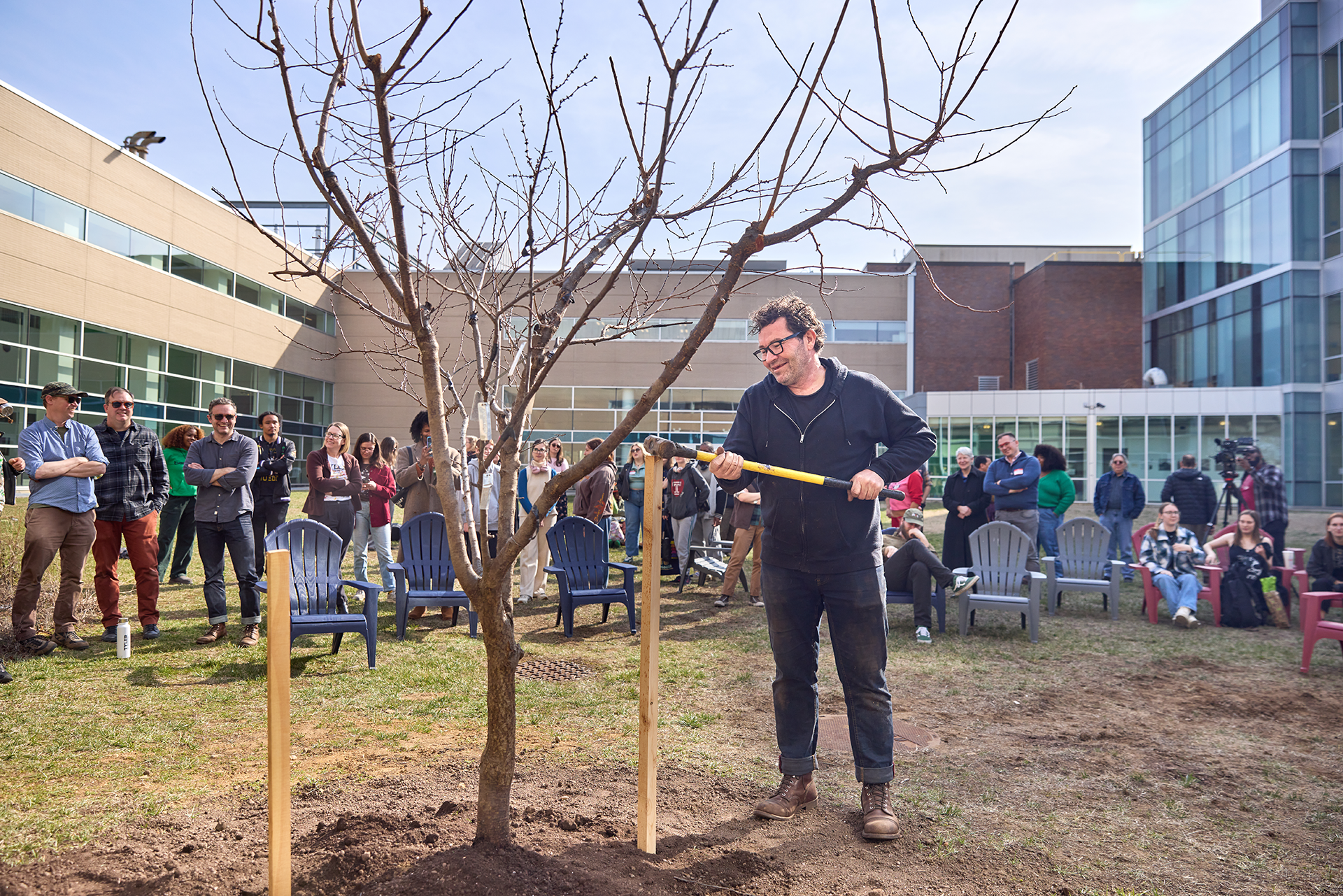
Both the tree planting and Van Aken’s public lecture began with recognition of the Tyler School’s ongoing responsibility to steward the land with the Native peoples who formerly lived in the space it now occupies. Van Aken designed the Tyler tree with varieties “either documented or believed to have been cultivated by the Lenape,” including Indian blood cling peach, wild-goose plum, Chickasaw plum, beach plum and chokecherry.
His “work and practice truly embody Tyler’s mission,” says Nichola Kinch, Tyler School associate dean for academic affairs.
Professor (and Grid contributor) Bryan Satalino’s informational design class is working in teams on a 20-page care manual for the tree, giving students experience in project management, illustration, typography and content writing. “We saw that visuals would have a huge impact in keeping these trees alive,” Satalino says.
“We’re making sure it’s easy for people to read and understand,” says Madison Edelman, a junior studying graphic design. “I’m ecstatic to be a part of it. It’s definitely helping me grow as a graphic designer.”
“Typically, I’ll either be invited to come in as a visiting artist, or I’ll be invited in because people are interested in trees,” Van Aken says. “It was a really amazing experience to have a week where I could focus on it all.”
Approximately 70 saplings — each primed to produce several varieties of fruit — have gone home with students. Any that remain, Kinch says, are destined for the Temple Community Garden.
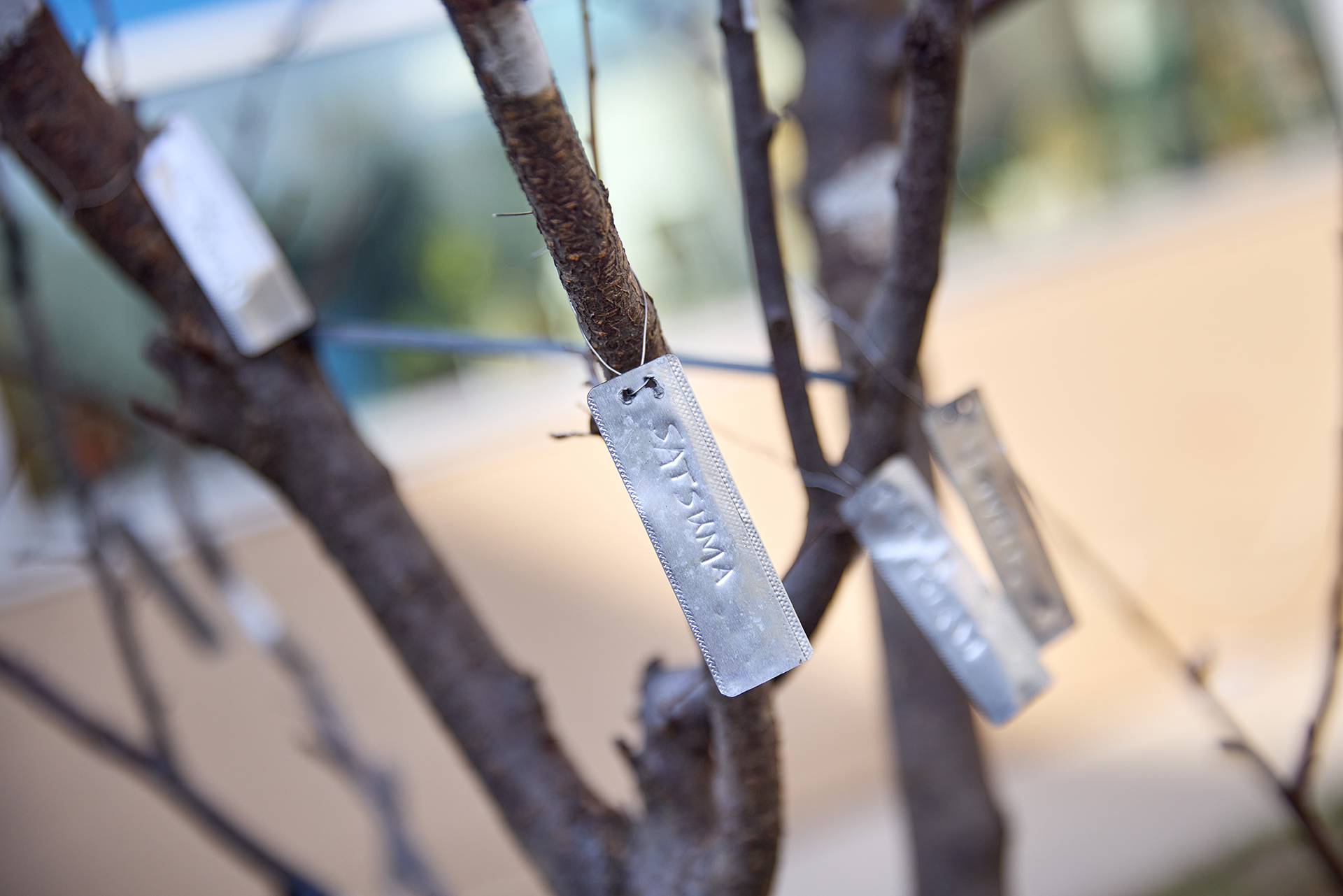
Van Aken, a Reading, Berks County, native, thought art would offer a path away from farming. After returning from his studies in Poland, he began his career with media pieces but eventually began grafting plants. His great grandfather’s ability to graft had become, in his mind, a kind of magical power.
When he decided to create the Tree of 40 Fruit, the number being auspicious in the Bible and as the unfulfilled promise of reparations, he had difficulty finding enough varieties of stone fruit in New York, which surprised him since a century prior, the state had been home to more than 2,000. The effects of our commercial monocultures became apparent.
When an agriculture experiment station in New York State that Van Aken describes in his 2014 TedxManhattan talk as the single orchard that contained “heirloom, native, antique and hybrid varieties” going back 150 to 200 years was about to be torn out due to a lack of funding, he took up the lease and later found himself as the sole steward of two dozen varietals.
Van Aken developed the farm into a nursery, where he continues to start his trees from root stock. He began his effort to conserve fruit varieties by creating unique copper plate botanical etchings, and later he developed the Open Orchard project on public space in New York City.
As the plant hardiness zone map in Syracuse has risen 10 degrees in recent years, he says he has had to turn to Canada for hardy varieties that can withstand early thaws followed by hard freezes that have become typical in our region.
Van Aken is currently working on a book about the Open Orchard project and focusing on weather-related projects. He says he will continue creating the copper plate etchings because “it’s a way to sneak stuff into museums.”


